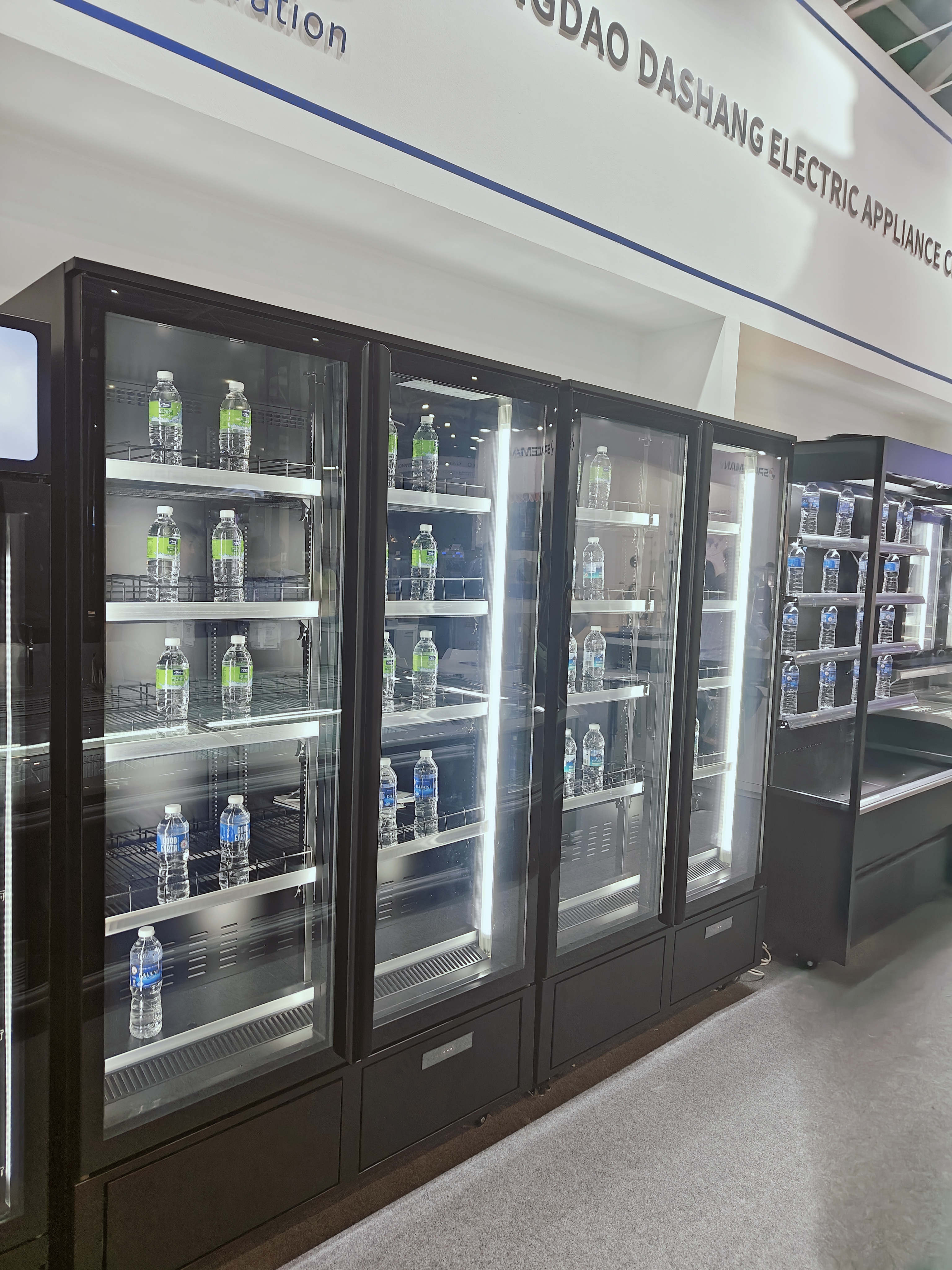Glass door coolers have become an essential part of modern retail, beverage distribution, and food service operations. For brands and distributors aiming to improve product visibility, maintain stable refrigeration, and maximize merchandising impact, investing in the right glass door cooler is crucial. Demand continues to grow as businesses prioritize energy efficiency, consistent temperature control, and professional display performance.
Key Features of a Modern Glass Door Cooler
A high-quality glass door cooler is more than a refrigeration unit. It is a merchandising and operational tool designed to maintain temperature, reduce energy cost, and attract customers with clear product visibility. Several technical features define today’s commercial-grade coolers.
• Double or triple-layer insulated glass doors for reduced condensation
• LED interior lighting for professional product presentation
• Adjustable shelves supporting multiple product formats
• High-efficiency compressors for stable cooling performance
• Low-noise operation suitable for retail and hospitality environments
• Durable stainless-steel or coated steel construction
These features help businesses maintain reliability while reducing long-term refrigeration costs.
Cooling Performance and Temperature Stability
Cooling uniformity is one of the most important performance indicators when evaluating a glass door cooler. For B2B environments such as supermarkets, cafés, convenience stores, and beverage distributors, consistent temperature is essential for product safety and shelf life.
• Multi-airflow circulation ensures uniform cooling
• Digital temperature control improves accuracy
• Automatic defrost systems prevent ice buildup
• Energy-efficient refrigerants reduce operating cost
• Independent temperature zones in multi-door models
Reliable cooling performance ensures that beverages, dairy, packaged foods, and specialty products remain fresh and properly preserved.
Energy Efficiency and Operational Cost Benefits
Energy consumption represents a major operational expense for businesses operating multiple coolers. An advanced glass door cooler can significantly reduce electricity use without sacrificing performance.
• High-efficiency compressors with lower energy draw
• LED lighting systems with minimal heat output
• Improved door seals to reduce cold air loss
• Smart controllers that optimize compressor cycles
• Eco-friendly refrigerants compliant with global standards
Many businesses report double-digit savings by upgrading to modern energy-efficient coolers.
Applications in B2B Industries
Glass door coolers are widely used across multiple commercial sectors due to their visibility, reliability, and merchandising value.
• Supermarkets and grocery stores
• Beverage and beer distributors
• Convenience stores and gas stations
• Hotels, cafés, and restaurants
• Food-service supply chains
• Pharmaceutical or specialty storage environments
Their combination of cooling efficiency and product display makes them valuable for any business that needs product visibility and safe refrigerated storage.
Purchasing Considerations for B2B Buyers
Before choosing a glass door cooler, businesses should evaluate several key factors related to performance, durability, and long-term value.
• Required capacity: number of doors and total storage volume
• Temperature range and cooling system type
• Door glass thickness and condensation prevention
• Energy consumption rating and compressor brand
• Warranty coverage and after-sales service
• Exterior material durability for high-traffic locations
• Custom branding or lighting options
These considerations ensure businesses choose the right unit for operational and merchandising needs.
Summary
A glass door cooler is an essential asset for modern retail and food-service operations. From cooling efficiency to merchandising impact, the right model directly influences product freshness, energy cost, and customer experience. By understanding technical performance, energy efficiency, and application suitability, B2B buyers can make informed decisions and select a cooler that supports long-term business growth.
FAQ
What industries most commonly use glass door coolers?
They are widely used in retail, beverage distribution, food service, and hospitality sectors.
What temperature range do commercial glass door coolers typically offer?
Most models operate between 0°C and 10°C, depending on the product type.
Are LED lights better for glass door coolers?
Yes. LED lighting provides bright visibility and consumes significantly less energy.
Can glass door coolers be customized with branding?
Yes. Many manufacturers offer custom stickers, color panels, and branded light boxes.
Post time: Nov-25-2025





